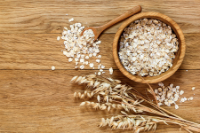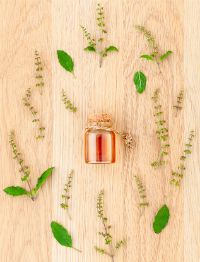Metabolic syndrome is killing America. This group of risk factors - which includes a large waistline or "apple shape," a high triglyceride level, a low HDL "good" cholesterol level, high blood pressure and high fasting blood sugar - can raise your risk of stroke, double your risk of heart disease and multiply your risk of diabetes by five.
You must exhibit at least three of these risk factors to be diagnosed with metabolic syndrome. Although the risk of developing metabolic syndrome is closely linked to obesity, a lack of physical activity at any body size, as well as insulin resistance, genetics and aging may also increase your risk for metabolic syndrome. As a general rule, everyone should pay attention to metabolic health. Luckily, committing to a healthy lifestyle can help you prevent metabolic syndrome and its related disease states.
Here are 5 areas to be mindful of:
1. Maintain a balanced diet of whole foods. Limit unhealthy foods. Instead, reach for fruits, vegetables, fish and whole grains. The Dietary Approaches to Stop Hypertension (DASH) diet and the Mediterranean diet are centered on real, whole foods and provide excellent guidelines for eating for your health, metabolic and otherwise.
2. Get up and move! Moderate exercise - such as taking a brisk walk - for 30 minutes each day will drastically improve your body's defenses against developing metabolic syndrome and a host of other ailments.
3. Reduce your sugar intake. Honey was the primary sweetener until the Middle Ages when sugar was introduced. Still, due to primitive production techniques, both sweeteners were primarily reserved for the well-to-do. In fact, up until the last few hundred years, the majority of people, especially the poor, had no sweeteners at all in their normal diet, so obesity was seen primarily among the wealthy. Observational data and international research suggest a strong link between sugar-laden diets and metabolic syndrome, obesity, hypertension and diabetes. One of the easiest ways to reduce your sugar intake is to ditch soft-drinks and other sugary drinks, including processed juices. You can also cut out candy and cut back on how often you enjoy a sugary dessert. Missing the sweet in your life? Enjoy a piece of fruit, or opt for a small amount of raw honey as a sweetener. Another suggestion? Substitute stevia for sugar as your daily sweetener.
4. Keep stress to a minimum. Research now shows that chronic high stress levels can significantly increase the risk of developing diabetes, heart disease and obesity. In fact, it is reported that three-quarters of American health care spending goes toward treating such chronic conditions. To help cut back on your stress, consider setting limits for yourself, learn to say "no" without feeling guilty, meditate, give yoga a try or set aside time everyday to read a good book. Whatever it is that calms your nerves and allows you to recharge, do that!
5. Maintain a healthy weight for your body. If you are overweight or obese, implementing and sticking with the lifestyle changes listed above will naturally help you shed pounds. Losing weight can help reduce insulin resistance, blood pressure and your risk of diabetes. Find a body composition scale in your area to get a better idea of what your body's ideal weight is.
No matter your size, shape or current state of health, it is a good idea to consult Dr. Bossio to determine if you are at risk for, or living with, metabolic syndrome. For more information, visit the resources below.
Resources
What is Metabolic Syndrome? National Heart, Lung and Blood Institute.
Blood Sugar Basics. BloodSugarBasics.com
Metabolic syndrome. Mayo Clinic.
Stressful Life Events and the Metabolic Syndrome: The Prevalence, Prediction and Prevention of Diabetes (PPP)-Botnia Study. American Diabetes Association.
Potential role of sugar (fructose) in the epidemic of hypertension, obesity and the metabolic syndrome, diabetes, kidney disease, and cardiovascular disease. The American Journal of Clinical Nutrition.
Huffington, Arianna. 2014. New York, NY: Harmony Books. Thrive.
Mediterranean Diet. Wikipedia.
Image Attribution: kgtoh/bigstock.com












